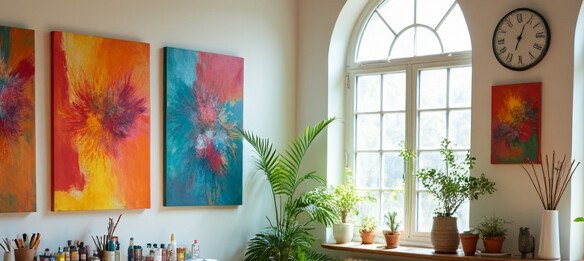How Art Therapy Transformed Lives

Creating a craft project as well an art project has made a real difference for people facing all sorts of challenges, from managing anxiety to creating a masterpiece. The colorful stories that come out show how creativity isn’t just about making pretty pictures; it’s about finding new ways to heal, cope, and grow. More people are starting to notice how powerful creative expression can be, especially when words just aren’t enough. It’s not surprising that crafting in art therapy is spreading fast as a trusted support system, whether you’re dealing with rough times or simply want a healthy outlet.
The Power of Art
Art, as a craft or as therapy helps people use drawing, painting, sculpting, or collage to express things that words sometimes can’t describe. It’s not about skill or talent; it’s about expressing and working through feelings in a way that feels safe. The results might surprise you, especially if you haven’t been able to get into talking therapies before. Often, the process gives folks new confidence, letting them step up and see fresh possibilities in the middle of struggles.
- Stress Relief: Making art gives people time to slow down, breathe, and focus, which is super helpful for stress.
- Self-Discovery: Exploring art can reveal details about yourself or your experience you might not notice otherwise.
- Emotional Release: For tough emotions like grief, anger, or fear, art can help get those feelings out and look at them with more understanding.
This approach is used in hospitals, schools, addiction recovery programs, and therapy practices all over the world. Research shows that adding creative activities to treatment improves mood and well-being for lots of people (source). Even if you’re not seeking deep-level therapy, the benefits of regular creativity—like lowered stress and a better mood—can give a boost to daily life.
How Art Therapy Works for Different Challenges
Art crafting for therapy isn’t one-size-fits-all. Therapists adjust their approach depending on age, abilities, and what someone is dealing with. Here’s how it’s used for a few common life challenges:
- Kids: For children, art therapy is often playful, with lots of painting, drawing, and puppetmaking. It helps kids talk about things they might not have words for yet.
- Teens: Teenagers use art therapy to handle peer pressure, body image, stress, and identity issues. Creative selfexpression is especially powerful during those tricky years.
- Adults: For grownups living with depression, trauma, or health issues, making art in a supportive setting offers fresh ways to tackle old problems.
Care providers might use different materials or themes for different groups, from dream journals to abstract sculpture. If you’re interested in giving art therapy a try, you’ll find licensed art therapists in many cities and even online. The American Art Therapy Association offers a therapist locator to help you track down someone nearby. Don’t be afraid to ask questions or try a few sessions to see what fits best—your comfort is what matters most.
Tips for Trying Crafting some Art as a Therapy Yourself
You don’t need fancy supplies or any art background to get started with art therapy. Here are a few tips for anyone curious about testing it out on their own:
- Set aside a regular time each week just for making art, however you like.
- Try simple materials like pencil, crayons, or watercolor.
- Don’t judge what you create; focus on how you feel as you make it.
- Write about your art afterward or talk with someone you trust about what came up for you.
There are tons of free prompts and exercises on the internet to help you get started, no matter your skill level. You might even stumble upon creative communities or virtual art making sessions that bring people together for support and inspiration. If you’re looking for more guidance, consider connecting with a trained professional who can personalize activities for your needs.
Share Your Thoughts
Have you tried art therapy, or do you have questions about how it works? Drop a comment below; your stories and questions help others feel less alone during their creative healing adventure. Whether you’ve picked up a paintbrush or just thought about starting, every experience matters and deserves to be heard.